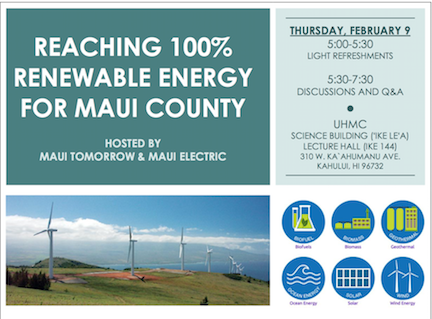This is an article from Mother Nature News discussing the 15% limit on rooftop PV.
Hawaii, California removing barrier limiting rooftop solar projects
The nation’s top 2 solar states are re-examining rules that can discourage rooftop solar projects. Other states are expected to follow their lead.
By Maria Gallucci, InsideClimate News
…Utilities in California and Hawaii pushed for the threshold about a decade ago because they worried that customer-owned solar facilities — which they can’t always control or monitor — would jeopardize the stability of the electric grid, causing widespread blackouts and power surges and damaging equipment.
As the demand for solar has increased, however, renewable energy developers and advocates have begun complaining that the 15 percent threshold is too low and the studies too cumbersome and expensive.
More electrical circuits in Hawaii and California are nearing the 15 percent mark, and more business and homeowners are facing the daunting review process, which can cost tens of thousands of dollars and take more than a year to complete, with no guarantee that the project will pass the utility’s review. To avoid the hassle and expense, many simply abandon their projects.
“The study requirement has been a virtual deal killer,” Isaac Moriwake, a Honolulu-based attorney with Earthjustice, a national environmental law firm, told InsideClimate News.
Late last month, after a year of negotiations between utilities and developers and clean energy advocates, Hawaii’s Public Utilities Commission took the first steps toward easing its distributed generation rules. Projects can now skip the full-blown study on circuits where solar systems account for less than 50 percent of the minimum daytime demand. Instead, utilities will review those projects within 20 days at no cost to the customer.
Moriwake said the agreement will act as a “relief valve” for the hundreds of projects waiting to connect to the grid in Hawaii. Earthjustice represented the Hawaii Solar Energy Association in the settlement talks.
Now, California, which has the most residential solar systems in the country, is considering opening its rules to more projects. Regulators, utilities and developers began talks last summer to at least reduce some of the red tape involved in the project studies.
Any changes made in Hawaii and California could have national implications, experts say, since most other states have adopted the 15 percent rule and the study requirement.
The nation’s total installed capacity of solar photovoltaics — the technology used in rooftop panels—has grown ten-fold since 2005, according to a recent study from the Solar Energy Industry Association and Boston-based GTM Research. And that growth is expected to continue as falling solar panel and installation costs entice more homeowners and mom-and-pop businesses to install panels.
California drafts first 15% policy, sets national stage
In 2000, California’s Public Utilities Commission enacted the nation’s first 15 percent threshold, part of a series of interconnection policies, known as Rule 21, on distribution generation.
At the time, small-scale solar systems were coming online en masse in the Golden State, and regulators and utilities were concerned about how the grid might respond to the new additions. The nation’s 20th-century electricity network was built for large centralized power plants that send steady amounts of fossil fuel-fired electricity down transmission lines, passing the electricity to area substations and eventually to local distribution lines.
Distributed generation, by contrast, sends electricity in the reverse direction: first along local power lines, and then up to the substations. The fear was that rooftop solar systems might overload a substation with electricity, triggering rolling power outages and causing circuits to break and explode.
“The existing system was designed to serve load customers and not designed for distributed generation applications,” said Denny Boyles, a spokesperson for Pacific Gas & Electric, one of California’s big three utilities.
California regulators saw that some sort of standard was needed to address those concerns, so they set out to determine how much distributed generation a local circuit could handle without requiring further study.
Generally, the minimum amount of electricity on the grid each year is 30 percent of the peak. Regulators figured that if distributed generation were as low as the minimum, it would have a slim chance of overloading the grid. But to be even more cautious, they set the threshold at half the minimum, or 15 percent. Anything beyond that would require extensive study to assess how additional projects would affect stability and safety on the grid.
After California passed its regulations, the 15 percent limit and the study requirement quickly became a rule-of-thumb for distributed generation throughout the nation. And for a while, the system worked well, because the number of small-scale systems in most states was so low that few projects required the rigorous reviews.
Today, however, rooftop solar is so popular that clean energy advocates say the rules have become a barrier in an increasing number of communities. But utilities have been reluctant to relax the regulations, even though their worst fears about distributed generation haven’t materialized.
That’s because the consequences of a grid failure are so grave. “The utility alone bears the responsibility for stability and reliability on the grid, said Darren Pai, a spokesperson for the utility Hawaiian Electric Company, the Oahu subsidiary of Hawaii Electric Industries…


